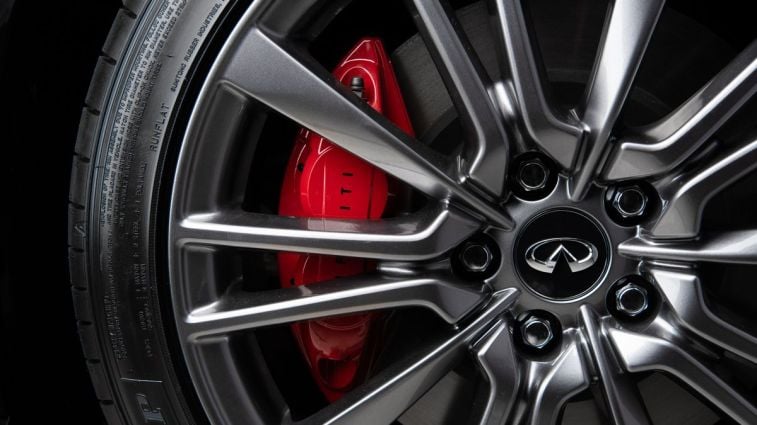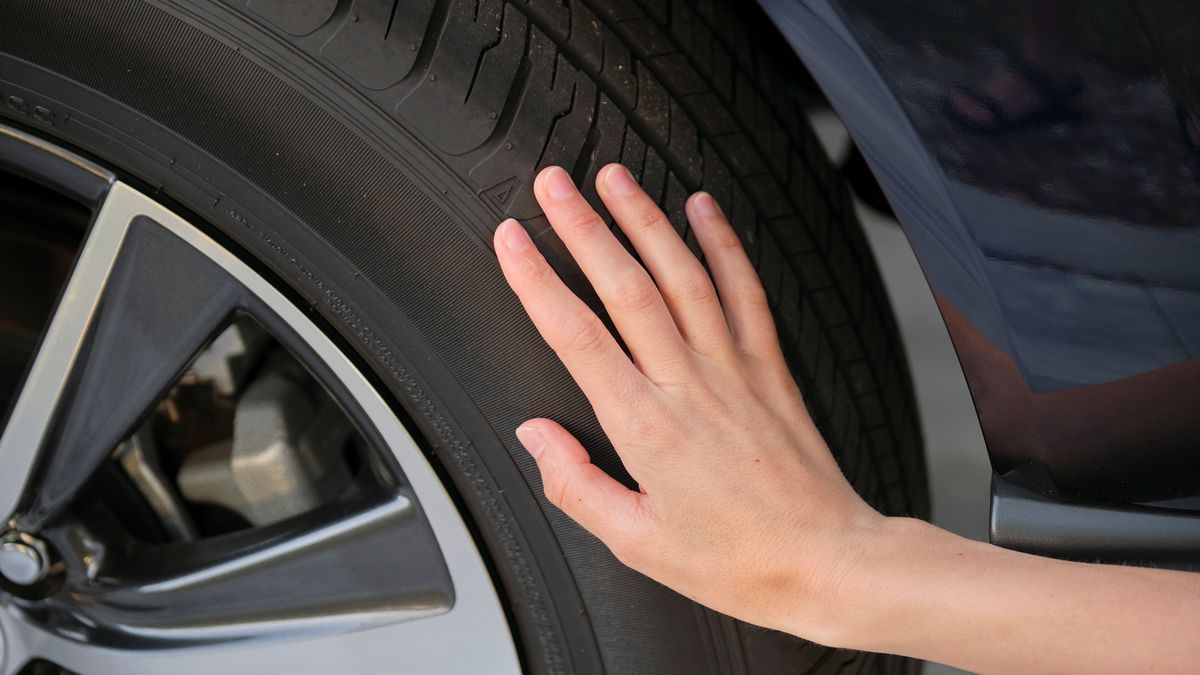Quick Facts about Run-Flat Tires
- Run-flat tires allow you to keep driving for up to 50 miles after a full-air-loss tire puncture.
- There are fewer replacement choices for run-flat tires.
- Run-flat tires can cost up to twice as much as a conventional tire.
It’s doubtful that drivers lie awake at night agonizing over whether or not their next car needs run-flat tires. However, it’s a weightier decision than it may seem at first blush. Tires are the most important single component on a car, truck, or SUV when it comes to safety, ride quality, steering, and traction. “It’s where the rubber meets the road” is a popular saying for a reason. Even if the topic of run-flat tires hasn’t been occupying a lot of bandwidth in your noggin, it is something to think about, particularly with many new cars sporting them. We’ve provided jump links in case you want to skip ahead.
- What Is a Run-Flat Tire?
- Are Run-Flat Tires More Expensive Than Regular Tires?
- Do Run-Flat Tires Wear Out Faster?
- Are Run-Flat Tires as Good as Regular Tires?
- Should You Buy a Car with Run-Flat Tires?
What Is a Run-Flat Tire?

A run-flat tire is one with reinforced side walls capable of supporting a vehicle’s weight in an air-loss event from a puncture. In other words, a run-flat tire’s structure is such that it can keep driving after a puncture that would have flattened a regular tire. Some carmakers commissioned run flats from their tire suppliers to reduce a vehicle’s weight, making it more fuel efficient. No spare tire, no jack, and no lug wrench translates into less weight and better fuel economy.
RELATED: Bridgestone Turanza Tires Test for EVs
Can a Run-Flat Tire Still Function Safely After a Sidewall Blowout?
Yes, in the very rare occasion of a sidewall blowout, the run-flat will still perform its primary function of getting you home, to a repair shop, or to a safer spot to change the tire. According to Ian McKenney, senior product manager, Bridgestone Americas, “Whether you run into a situation with a puncture or blowout in the center, shoulder, or sidewall of the tire, you should not lose the integrity of the run-flat tire at the manufacturer’s specified speed and distance.”
How Long Can You Drive on a Run-Flat Tire?
Most run-flats are engineered to drive about 50 miles after an air-loss incident, which gives them roughly the same range as those little space-saver doughnut spares found in many cars not equipped with run-flat tires. Likewise, most run flats are rated at about 50 miles per hour after total air loss, as are doughnut spares. “Be sure to check each manufacturer’s specifications on how fast and far you can drive on run-flat tires as they differ,” McKenny said.
RELATED: Car Tires Guide: Everything You Need to Know
Do Run-Flat Tires Handle Potholes Better?
Run-flats do not handle potholes better than conventional tires. On the contrary, because their sidewalls are much stiffer than a conventional tire, the likelihood of a side wall splitting or cracking from a severe pothole hit is greater. However, as Consumer Reports points out, run-flat tires offer a better chance of being able to limp home or to a repair shop after pothole damage.
Can You Fix a Run-Flat Tire?
No, there is no fixing a run-flat tire. A legitimate tire store or repair shop won’t even attempt plugging a run-flat. Moreover, the structure of a run-flat can mask additional tire damage that might not be readily apparent. Consequently, driving on a “repaired” run-flat would be unsafe.
Are Run-Flat Tires More Expensive Than Regular Tires?
Generally, run-flats cost anywhere from 25% to 100% more to replace than regular tires. However, it’s not simply the extra costs of executing the run-flat technology driving up prices. Because there is less demand for run-flats, tire makers produce fewer run-flat variants. Less competition contributes to higher prices. Moreover, we always advise that when replacing a tire, at the very least, you also replace the other tire on the same axle. When run flats are involved, that can run into some serious cash.
Tip: The higher prices of run-flats make it less likely for tire stores, especially smaller retailers in rural locations, to stock a big selection. If a blowout occurs in a lightly populated area, the retailer may have to order the appropriate replacement tire.
RELATED: Run-Flat Tires: Pros and Cons
Do Run-Flat Tires Wear Out Faster?
Run-flat tires usually wear less well than conventional tires. According to Consumer Reports, on average, run-flats require replacement roughly 6,000 miles sooner than regular tires.
How Often Should I Replace Run-Flat Tires?
As with conventional tires, the timetable for replacing run-flat tires varies by tire, vehicle, and driver behavior. In other words, it depends. For tires otherwise in good condition, tread depth determines when it’s time to replace them. The driver advocacy organization AAA recommends a minimum tread depth of no less than 1/16th of an inch.
Tip: A down-and-dirty method for the 1/16th test is to insert a quarter with Washington’s head facing down into the groove between treads. If you can see the top of his head, it’s time to replace your tires.
RELATED: Do My Tires Need to Be Replaced?
Are Run-Flat Tires as Good as Regular Tires?
Run-flat tires are designed to do one thing conventional tires can’t: Keep you driving after a full-air-loss puncture. In every other respect, they are inferior to conventional tires. Run-flat tires:
- Cost more to replace.
- Offer fewer replacement choices.
- Wear out sooner.
- Deliver a rougher ride.
- Can’t be repaired.
Should You Buy a Car with Run-Flat Tires?
There’s no doubt that if peace of mind is on your mind, run-flat tires may mean never again changing a tire on the side of a busy highway. That’s a solid motivator in our book. Otherwise, however, the arguments for conventional tires are overwhelming.








